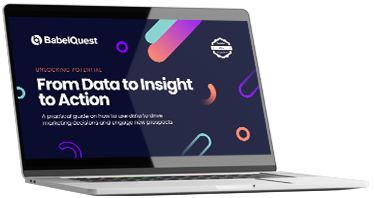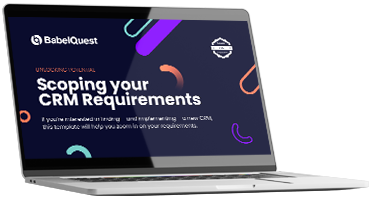Difficulties in revenue forecasting broadly fall into two sections. Some occur because of how a sales team works or is run. Others happen because of weaknesses in how teams use their CRM or other essential platforms. Here are five errors you should look out for and address.

For HubSpot's more general overview of factors that might affect forecasting, e.g. economic and legislative changes, visit this blog.
1. Overestimating how likely a deal is to close
How good is your sales team at predicting sales? Are they having to rely on guesswork?
You may well be familiar with the type of old-school sales environment where, on a Monday morning, a manager surprises his team with a high-pressure approach, demanding to know how many deals are going to close. In this environment, jolted into a response, his team promise that certain deals are about to close and others are "this close". But are they exaggerating? Or is their best guess just some way off the mark? Your salespeople might tell you a deal is highly likely to close, but what are they using as evidence?
One solution for this is to look at actual close likelihoods/indicators.
If a prospect is sending emails to you (and not the other way around), that's a sign of an engaged lead. You can track this type of engagement and build reports of interactions to show you where there is a genuinely increased level of engagement. In HubSpot, for example, there are plenty of tools you can adapt for your particular sales process; to call one out here, your deal pipeline will show you a percentage score for a deal, which increases with each useful interaction. This represents a much more meaningful estimate than simply making one call and then relying on a gut feeling about whether the deal will happen.
Read our blog for more advice on working with your sales team and assessing your sales process.
2. Skewing your data by under-estimating the close date
Another point to note is about push rates and move dates. You will be using your CRM to record where potential deals are in the sales process, but if they get marked as moving to the next stage too early/too optimistically, it will affect your forecasting.
You can tackle this problem by adding "exit criteria" i.e. rules to show when it's appropriate to move a deal along in your CRM. With qualifying questions, a helpful pop-up will appear with a compulsory, qualifying question, requiring more information to keep your team accurate and remove the guesswork.
Read more about using exit criteria in this helpful article from HubSpot on buyer-centric deal stages.
3. Not talking to the whole decision unit
Every so often, you might encounter someone who seems to be (or tells you) they are the decision-maker for your deal, but actually, there's someone more senior who can put a spanner in the works.
To increase the accuracy of your deal predictions — and your "close likelihood" — it's well worth making sure you're talking to the whole decision unit. Make sure you have the names of your prospect organisation's decision-makers in your CRM. (No names for a deal in the CRM? Then who are your salespeople talking to? Gathering the relevant information together can give you a more holistic view of your deal and the needs of the company you're selling to.)
4. Not having a consistent, accurate process
You can't predict the future. Yes, there are curveballs and global events that could affect many businesses adversely, but day-to-day inaccuracy could be a much bigger problem. That can happen if you don't have accurate systems in place or are working with inherited data or the wrong data points.
"Sometimes, sales managers worry that they'll experience pushback if they change their processes, but without data, you're just flying blind. It's important to work out which are the actual close indicators for your own business/organisation and then set yourself up to analyse and adapt to those."
Chris Grant, Sales Enablement Consultant, BabelQuest
One way to improve your process is to work out what you need to achieve and work backwards from there. Using BANT properties as a framework is a good way to look at building in data points. The acronym BANT stands for: budget to spend, authority to buy, need for the product, and (purchase) timeline. You can also number the prospect's level of each one of these characteristics, from low to high, to strengthen the quality of your predictions.
CRMs like HubSpot can provide you with plenty of tools to dig deeper and report back more realistically. Plan how you are going to use them, then set up your systems and processes so you actually do so, in a consistent way.
Being consistent is a golden rule. Sometimes that can be hard because of the dynamic nature of sales activity, but it's an important element in effective forecasting.
"Your team needs to be actively using deals and keeping them up-to-date for accuracy. If they're not kept up-to-date, your data will be untrustworthy. If you are consistent, you can use your data to get an even more accurate picture over time"
Gem Latimer, HubSpot Strategist, BabelQuest Expert Practices team
5. Ignoring lead and lag indicators
Perhaps Frank Sinatra explains the need for forecasting best in the song 'That's Life' when he sings, "You're riding high in April, shot down in May". Things can be going great for a while, but if you don't feed into your pipeline, then you could be looking at quiet times ahead, having not prepared for the future.
Say you have a long sales cycle, for example, a 6-month delay before deals actually close. Actions like making enough calls or creating enough deals are examples of leading indicators, which show you performance that might affect your success. You need to have plenty of engaging sales activity happening to feed into your pipeline.
A lag phase is the outcome of an event or activity, which basically shows you how well a strategy has performed. Covid-19 has been a lag phase for many, with no deals closing for some or part of the time. Forecasting is important in both lead and lag phases because you need to know what shape your business is going to be in, especially given that the situation may not become clear until the end of a long sales cycle.
You can use lead and lag activity as indicators — i.e. metrics you could measure — to forecast revenue. Take new deal creation as an example. A lack of activity or a drop-off in deal creation could indicate a problem on the horizon. You can use it as an early warning system: not only to show that more activity is needed but also to predict the potential results of that trend on your revenue.
Learn more about reporting from BabelQuest's sales enablement expert Chris Grant, who advises on how to plan and develop your sales strategy here.
Using HubSpot's free CRM? Have a look at tools like prospect tracking, pipeline management, lead visit alerts and more, as explained by Chris in this article.




